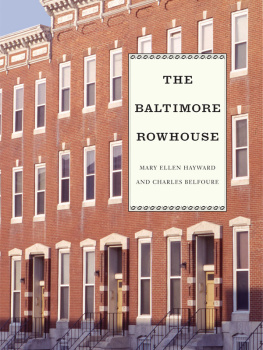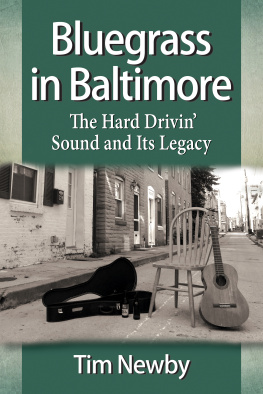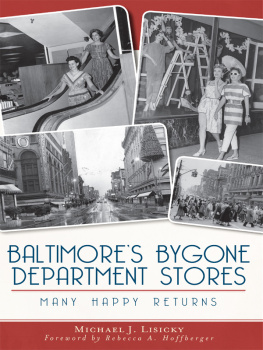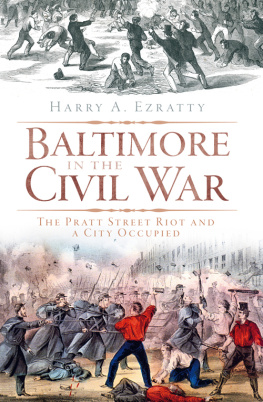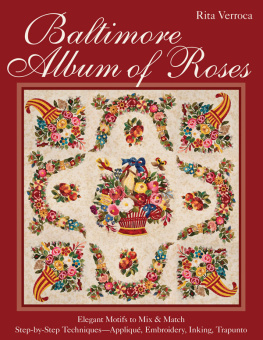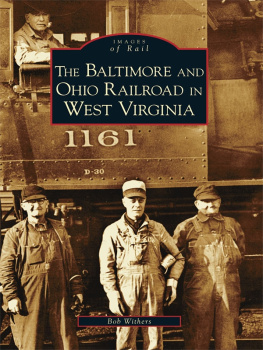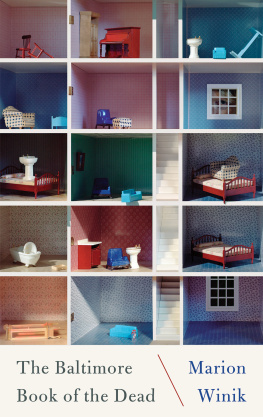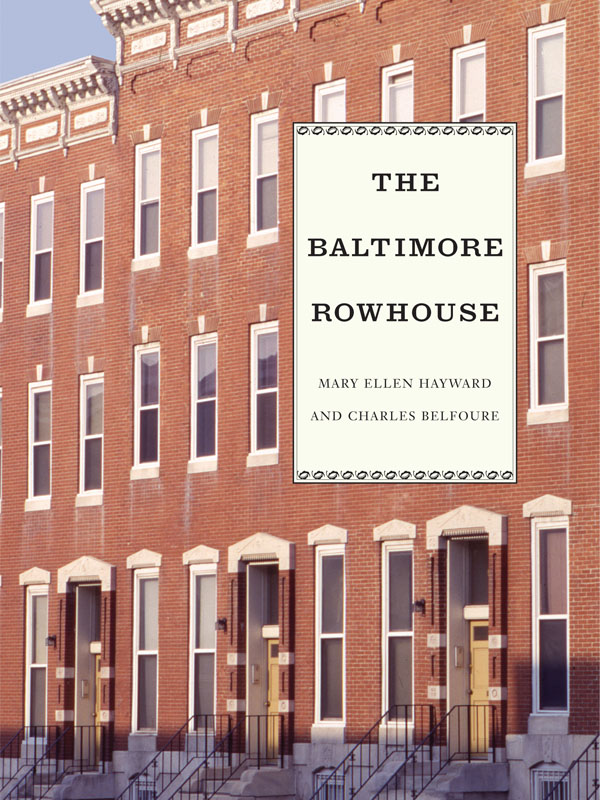
The Baltimore Rowhouse
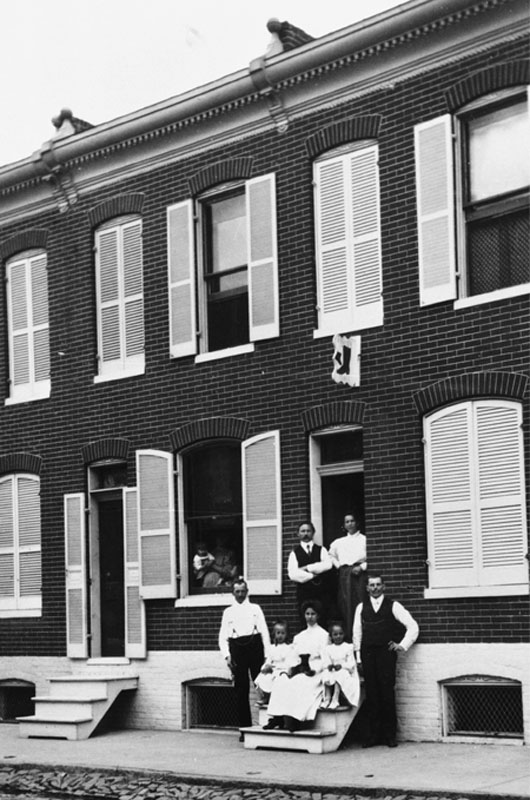

The
Baltimore
Rowhouse

MARY ELLEN HAYWARD
AND
CHARLES BELFOURE
Foreword by James Marston Fitch
PRINCETON ARCHITECTURAL PRESS New York
This book was made possible by a grant from
The James Marston Fitch Foundation (formerly The James Marston Fitch Trust)
and the Samuel H. Kress Foundation
PRINCETON ARCHITECTURAL PRESS
37 East 7th Street
New York, NY 10003
212.995.9620
For a free catalog of other books published by Princeton Architectural Press,
call toll free 1.800.722.6657 or visit www.papress.com
1999 Princeton Architectural Press
All rights reserved.
Printed and bound in the United States
ISBN 978-1-56898-283-0
ISBN 978-1-56898-956-3 (digital)
No part of this work may be used or reproduced in any manner without written
permission from the publisher except in the context of reviews.
Every reasonable attempt has been made to identify owners of copyright.
Errors or omissions will be corrected in subsequent editions.
EDITING : Jan Cigliano
BOOK DESIGN print edition: Sara E. Stemen
PHOTOGRAPH INSERT DESIGN: Karla Roberts
COVER PHOTOGRAPH: Alain Jaramillo
FRONTISPIECE:
900 block North Bradford Street, circa 1909; John Dubas Collection, Maryland Historical Society
SPECIAL THANKS:
Eugenia Bell, Jane Garvie, Caroline Green, Clare Jacobson, Mark Lamster,
and Anne Nitschke of Princeton Architectural Press Kevin C. Lippert, publisher
LIBRARY OF CONGRESS CATALOGING-IN-PUBLICATION DATA
Hayward, Mary Ellen, 1947
The Baltimore rowhouse / Mary Ellen Hayward and
Charles Belfoure ; foreword by James Marston Fitch.
New York : Princeton Architectural Press, 1999.
p. cm.
Includes index.
1. Row housesMarylandBaltimore. 2. Architecture, DomesticMarylandBaltimore.
I. Belfoure, Charles, 1954 . II. Title. III. Title:
NA7238.B3H38 1999
312.097526dc21 99-014573
CIP
TO MY MOTHER, ELEANOR BERRY HAYWARD
MY DAD, JOHN HAYWARD
AND MY DAUGHTER, MILLY
Mary Ellen Hayward
TO CHRIS, JULIE, GLORIA, AND MY MOM
Charles Belfoure
Acknowledgments
THIS BOOK BEGAN WITH a special collaboration between a historian of architecture and urbanism and an architect interested in renovations and real estate development. Each had been working independently on Baltimore rowhouses for some time, and they finally met in 1995 to write this book together.
Charles Belfoure, an architect who had studied at Columbia University and worked as a preservation architect in Connecticut, returned to his hometown of Baltimore in 1995 with the idea of writing a history of the Baltimore rowhouse. Mary Ellen Haywards fascination with the Baltimore rowhouse began in 1978 when, with the support of the Maryland Historical Trust and Struever Bros. and Eccles, she completed a survey of structures in Federal Hill, one of Baltimores oldest communities. During the survey, Michael Isekoff led her through the intricacies of deed research in the Baltimore City Land Records; the Maryland Historical Society, with a complete set of Baltimore City Directories, provided the answers to questions that arose at Land Records: who was buying houses in 1795, 1810, 1860, and 1880? did rowhouse owners build the houses themselves, or did they hire someone? Patterns emerged and the mass of data became history. In 1981 Baltimores historic Peale Museum, after a major renovation, re-opened with a large permanent exhibition, Rowhouse A Baltimore Style of Living , created by assistant director Barry Dressel, Ms. Hayward, curator Robert Weis, and photographer Jane Webb Smith (whose images appear in the book). Exhibition designers Patricia Chester and David Root produced elevations and isometric drawings of typical rowhouse types, which illustrate the text.
In 1997 the authors were awarded a major grant from the James Marston Fitch Charitable Trust to support final research and publication. The Baltimore Architecture Foundation also provided support and information regarding Baltimore architects. We would like to especially thank James F. Wollon, president of the Historic Architects Roundtable (a.k.a. Dead Architects Society); Charles B. Duff, president of the Baltimore Architecture Foundation; and Jillian Storms, past president, who shared information and were very helpful. In addition, we are grateful to the invaluable assistance of Baltimore Heritage, Inc., a private preservation organization, and Baltimores Commission on Historical and Architectural Preservation (CHAP), particularly director, Kathleen Kotarba, and staff member Eric Holcomb. Thanks also go to Dean Krimmel, a local expert on Baltimore rowhouses; Barry Dressel, Director of the Chrysler Museum; Dr. Jeffrey A. Cohen at Bryn Mawr College and an expert on Philadelphia rowhouses; Bill Pencek, deputy director of the Maryland Historical Trust and president of Baltimore Heritage; and Karen Lewand, director of AIA Baltimore.
For archival information and illustrations, the authors are indebted to the invaluable collections at the Winterthur Museum and Library; the Hagley Museum and Library; the Museum of Early Southern Decorative Arts; the Maryland Room and the periodical department of the Enoch Pratt Free Libraryparticularly Jeff Corman, Eva Slezak, and John Sondheim; the Maryland Historical Society, notably Barbara Weeks, Ann Verplanck, Rob Schoeberlein, Jennifer Bryan, Mary Markey, and Robert I. Cottom Jr.; the Baltimore Equitable Society, an early city fire insurance company (1794) that retains complete records and old policy books, and its past president Steve Bernhardt; the University of Baltimore Archives, directed by Tom Hollowak; the research and photograph collections of the Baltimore Neighborhood Heritage Project, directed by Dr. Theodore Durr in the late 1970s; and the Goucher College Library, which archives microfilm of the Baltimore Sun , 1850 through the present. Dr. Phoebe B. Stanton, retired professor of architectural history at the Johns Hopkins University, shared invaluable research from early-nineteenth-century Baltimore Sun editions, and Charles Belfoures mother, Kris, provided the wonderful service of translating records of the Polish Kosciusko Savings and Loan, which enabled the authors to identify clients and services.
As research proceeded and new topics emerged, we depended on the good offices of several local scholars, including: Dr. Garrett Power, of the University of Maryland Law School at Baltimore, an expert on land tenure, ground rents, and segregation; Philip Merrill provided information on black-operated savings and loans; Linda Shopes, a coauthor of The Baltimore Book: New Views of Local History (1991), shared her research on the Polish community in Fells Point and East Baltimore; and the late Martha Vill, a geography professor at the University of Maryland, who was one of the first scholars to investigate local land development processes. We were also fortunate to interview the descendants of leading rowhouse builders: Jim and Norman Gallagher, Jack Coady (the son of Gallaghers attorney), Joseph Keelty, Amy Macht, and Harvey Meyerhoffas well as those active in the homebuilding business today, including Lee Rosenburg and Jim Joyce of Ryland Homes; Don Taylor and Gloria Mikolajszyk of D. W. Taylor Associates, Inc. Architects; and Cheryl ONeill of CHK Planners and Architects. We are also indebted to the personal expertise of Robert C. Embry Jr., and Dr. Phoebe Stanton on Baltimores Renaissance; and Robert L. Eney and Lucretia Fisher, key activists in protesting the planned interstate highway that would have demolished two of Baltimores oldest neighborhoods in the 1960s; Jeff Tunney, an architectural woodworker, Catherine Black and James Dilts; Andrew Colletta, a realtor and Baltimore Heritage Board member.

